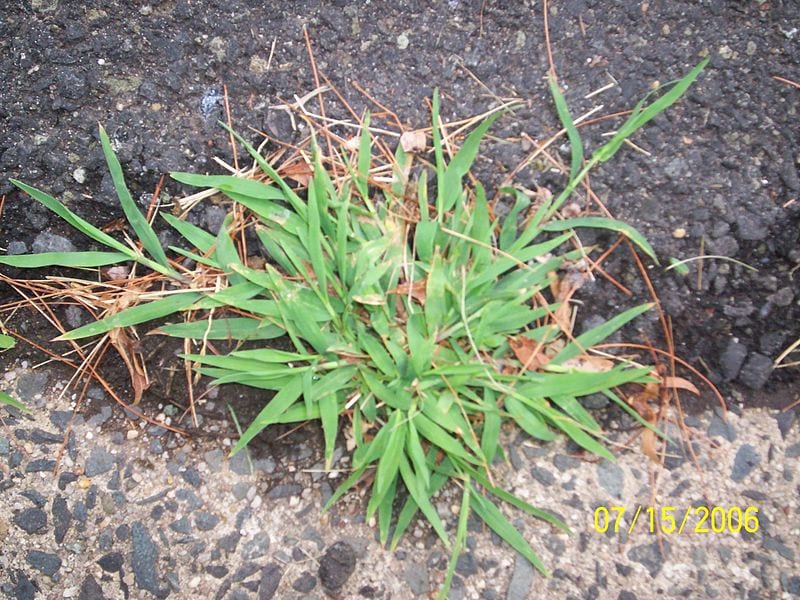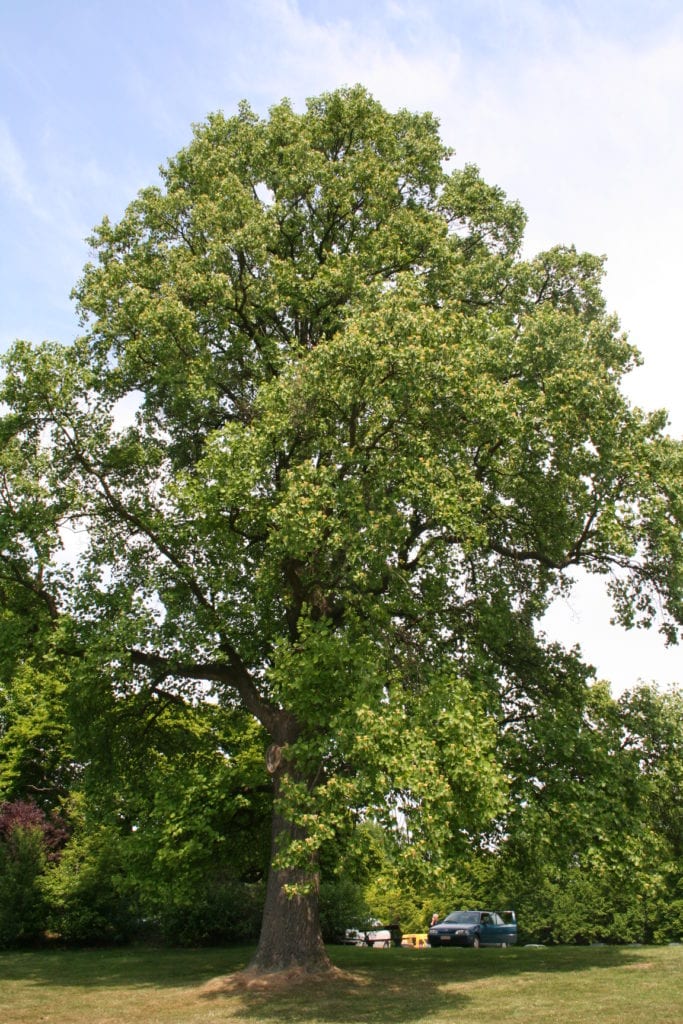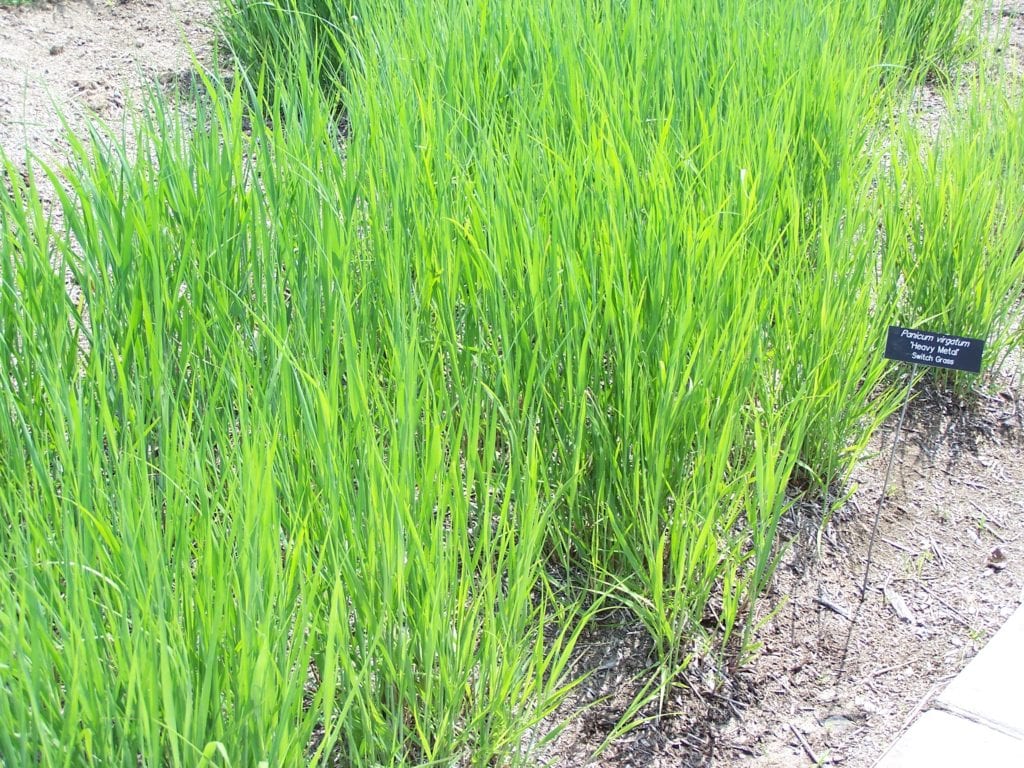I am on a landscaping committee for a community that sits upon approximately 20 acres. We want to (probably gradually) turn our landscape into one with native plants that support our wildlife, but we are also interested in planting as many carbon capturing plants as possible. So the first question is: other than trees, do some landscaping plants capture more carbon than others? And if so, can you direct me to a website or other resource? I live in northern Virginia.
You’re right that trees are huge carbon storing organisms, but there are other ways to look at carbon sequestration in your landscape.
First – Every plant captures carbon. That’s the fundamental formula of photosynthesis: carbon dioxide and water in the presence of a chlorophyll molecule (and a lot of neat organic chemistry) become sugars (and eventually everything else) and oxygen.
Second – Healthy plants can shed up to 70% of their photosynthate (sugars, etc.) into the soil colloid through their rhizosphere (where the root meets the earth and is encased in bacteria and fungi). This means that the carbon pulled out of the atmospheric carbon dioxide is now settling into the earth. If managed well, then that carbon will eventually convert to fulvic and humic acids and create a stable carbon component in the soil. This can be just as important as storing carbon above ground in persistent woody structures (trees and shrubs). The soil can be a huge storehouse for carbon. In fact, American soils could soak up more than 100 million tons of carbon annually according to Rattan Lal, soil scientist, Ohio State University. Every time the soil is broken up and exposed to air more carbon dioxide is released to the air, so plan to keep your soil disruption to a minimum. (This is actually a study in itself and well worth the effort.)

Although every plant captures carbon, C 4 plants, such as crabgrass have an exceptional ability to pull carbon out of the atmosphere and store it in surrounding soil.
Third – Look into stabilizing fungi of all kinds (easier in a woody landscape management plan). Fungi are essential for carbon sequestration – look up glomulin if you get curious.
Fourth – Some of the best plants for pulling carbon out of the air are the plants that are considered “C 4” plants. Some are the classic corn, millet, and sorghum as well as amaranth etc. Some are the weeds like crabgrass, purslane, kudzu, and poison ivy. If you get curious, look at the soil around the roots of a healthy crabgrass plant and you’ll see how much aggregation is occurring because of the sugars that the plant has pumped down into the soil. In many ways crabgrass is nature’s soil Band-Aid and provides superb graze and seed for wild animals and birds (domestic ones too, actually)
This makes the choices you and your committee will be making for the soil management for carbon storage as critical as the above ground plant selection choices. It’s a lot of fun to work on plant selection, but it can be just as much fun to work on soil organism diversity. Good luck!
M.L. Altobelli, Greenery in Motion, Westminster, MA
The most efficient plants for carbon sequestration are trees so wherever possible, plant trees – long-lived, native trees are your best choice. Below is one list of highly effective carbon storage (from http://eartheasy.com/), but you should check to see if these trees are native in your area:

Yellow poplar also called American tulip tree (Liriodendron tulipifera) was determined to be the top carbon-storing tree in one study. Photo: Jean-Pol GRANDMONT
- Yellow Poplar, or American tulip tree, was the top carbon-storing tree in one New York City study.
- Silver Maple can trap nearly 25,000 pounds of CO2 in a 55 year period.
- Oak (white oak, willow oak, laurel oak and scarlet oak) thrives in many climates and has good wildlife value.
- Horse Chestnut is adapted to harsh sites and provides exceptional shade for passive cooling benefits.
- Red Mulberry provides the added benefit of delicious seasonal fruit.
- London Plane is a good urban tree, very tolerant of pollution and root-cramping, resistant to cold and disease.
- American Sweetgum has brilliant fall colors, is large and long-lived.
- Dogwood offers lovely seasonal flowers and is a particularly dense tree.
- Blue Spruce*, widely introduced as an ornamental, thrives in most northern regions.
- Pines* (white, red, ponderosa and Hispaniola) are the most carbon-effective conifer.
*Recent European studies indicate that the darker, conifers might contribute to global warming so deciduous trees might be preferable. The ability of conifers to hold the carbon stores in the needles might offset this concern and more research is needed.

Whereas trees store more carbon above ground, the long roots of native grasses such as switchgrass (Panicum virgatum) store carbon below ground.
In areas where trees are not an option, the recommendation is for native shrubs and native herbaceous plants. Native grasses have deep root systems and are particularly effective at storing carbon. Panicum virgatum (switchgrass) is one example and you can explore the carbon storage potential in this Climate.org article.
The National Wildlife Federation provides some good general tips for carbon conscious landscapes: https://www.nwf.org/How-to-Help/Garden-for-Wildlife/Gardening-Tips/Gardeners-Guide-to-Global-Warming.aspx. Below is a list of general guidelines for a carbon-conscious landscape.
- Reduce the size of your lawn. Better yet, consider eliminating it entirely. Tip: Consider replacing your lawn with a native wildflower meadow.
- Use hand tools instead of power equipment. When you reduce the size of your lawn, for example, you’ll only need a push mower.
- Choose materials with low-embodied energy. Brick and concrete have large carbon footprints compared to gravel and especially wood. Used brick and other recycled materials are good choices, too.
- Emphasize woody plants that capture more carbon than fleshy herbaceous species. Create a flower meadow or vegetable patch, but plant most of your property with low-maintenance native trees and shrubs, preferably those that also provide food and nesting and resting places for birds and other wildlife.
- Plant trees and shrubs where they will block winter winds and provide shade in summer. This will reduce the amount of energy required to heat and cool your home and thus reduce your carbon footprint even further.
- Minimize or eliminate the use of fertilizers and pesticides on your property. Use compost and mulch produced from garden trimmings to enrich your soil instead, and use native plants that are naturally pest resistant.
Penny Lewis, ELA Executive Director

